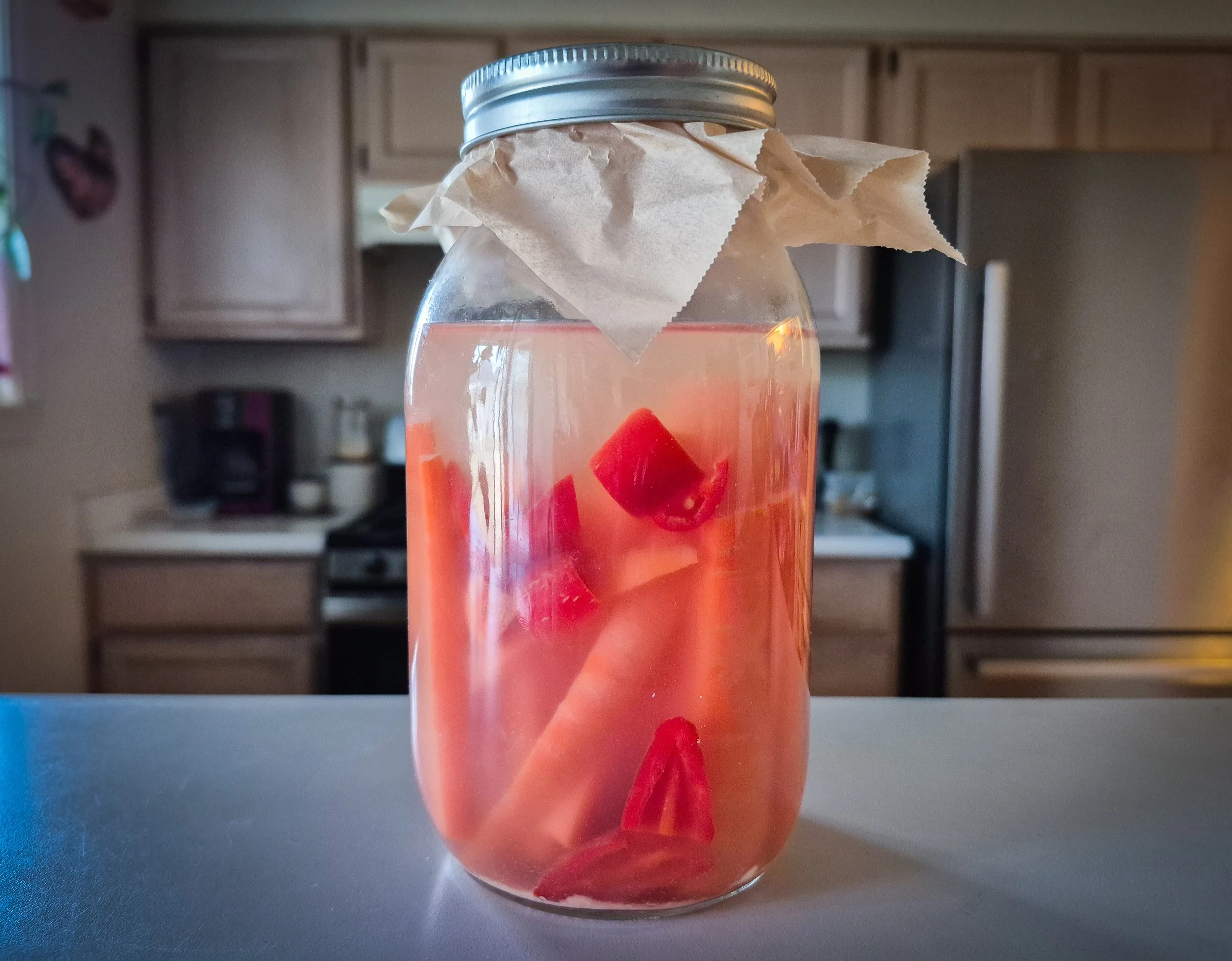Homemade Spicy Lacto Fermented Carrots
Carrots and red habaneros both taste amazing together. The sweetness the carrots get from the fermentation process pairs nicely with the habanero heat!
Ingredients:
4 whole carrots
4-5 spicy peppers (I used red habanero and serrano in the video)
Fine sea salt
Filtered water or bottled water
Tools needed:
Mason jar
Fermentation lid (mason jar lid with parchment paper is ok too)
Fermentation weight
Digital scale
Mixing bowl
Wire whisk
How to make it:
Wash carrots and peppers under cold running water and let air dry on a clean kitchen towel.
Cut carrots in half or thirds depending on length. They need to be cut so that they fit in the jar and are below the tapered neck portion of the jar. Cut each carrot piece into quarters. Remove stem from the pepper. Seed removal is optional. Cut the peppers in half or into small medallions if using longer peppers. In the video, I used habaneros in the first batch and serrano peppers in the second batch. This is great with all kinds of peppers and you can adjust for your spice level tolerance. You an also add a garlic clove or two if desired. Adding spices will also give the carrots a nice flavor. Try adding some whole coriander, cumin seeds, peppercorn medley, 1 clove or anise seeds.
Turn on your digital scale and set it to grams. Now, place a clean empty mason jar on your scale. Tare it (zero) and add your peppers and carrots. Fill the jar just below the neck with filtered water or bottled spring water. Try to stay away from tap water for best flavor. Take note of the weight. In my example, it was 793 g. Using this simple equation, you will get the amount of salt needed for the brine. Take note that I prefer to use fine sea salt that has no preservatives, not iodized and has no anti caking agents. Fine sea salt dissolves the best in water.
793 x .025 = 19.825
If your scale doesn’t read decimal points, round to the nearest whole number.
In this example, you will need 20 grams salt for the brine.
Next, pour out some of the water from the jar into a bowl. Place a small dish on the scale, tare it and add the calculated amount of salt. Stir to dissolve and add the water back into the jar with the ingredients.
Place a weight on the ingredients to keep them submerged under the brine level. This is very important as any ingredients allowed to get exposed to the air will most likely form mold and your will need to discard the batch and start over.
Ferment on your countertop or in your pantry away from direct sunlight for 1 month. Look for signs of fermentation. This will be small bubbles that aciculate on the carrots and/or peppers and might look like very lazy carbonation. The “fermentation bubbles” may also collect on the surface of the brine around the fermentation weight.
If this develops a white film on top of the brine, this is normal. It is a form of yeast that naturally occurs on fermented fruits and vegetables. Basically, it is a natural barrier that protects the ingredients from getting exposed to the air. It is harmless and can be consumed. However, the flavor is not the greatest and can be skimmed off before consuming.
After the fermentation period, I keep the jar as is in the refrigerator and grab a carrot stick or 3 with a fork. Try to keep the ingredients under the brine. These will last for months in the refrigerator, though they are tasty and will most likely get consumed very quickly.
Fermented carrots are a nice touch to vegetable platters or as a raw vegetable side that adds some excitement.
Enjoy
Logan
